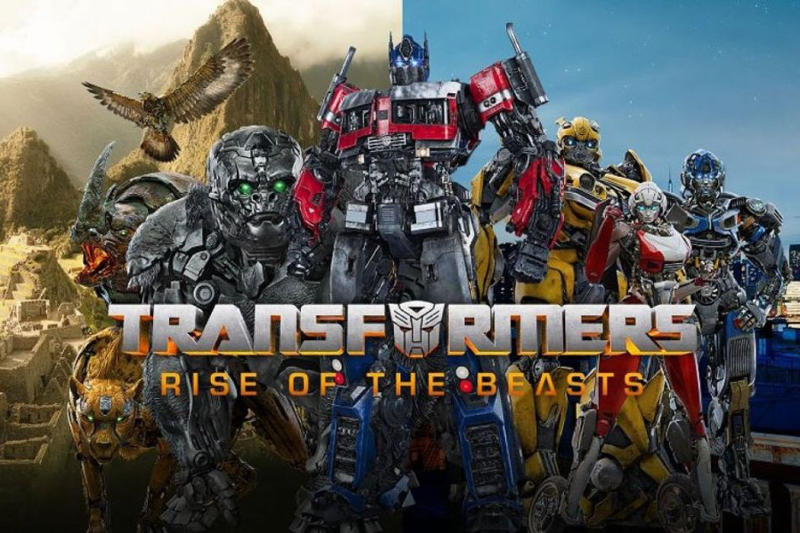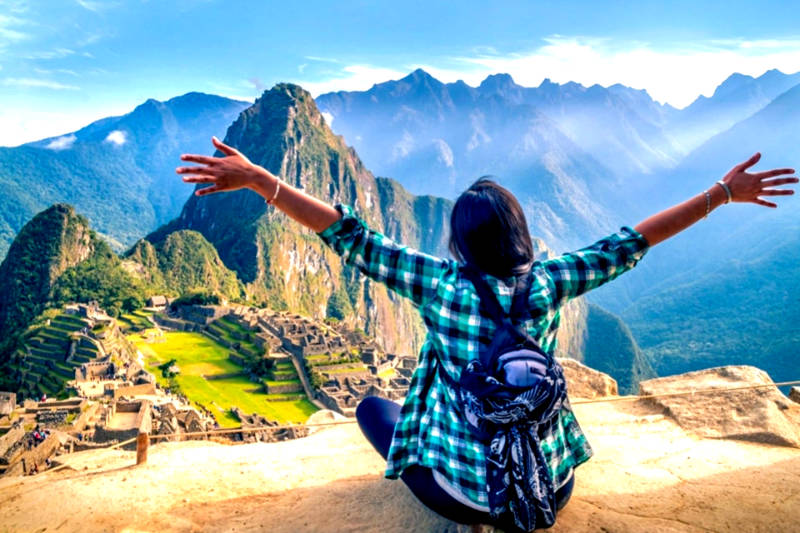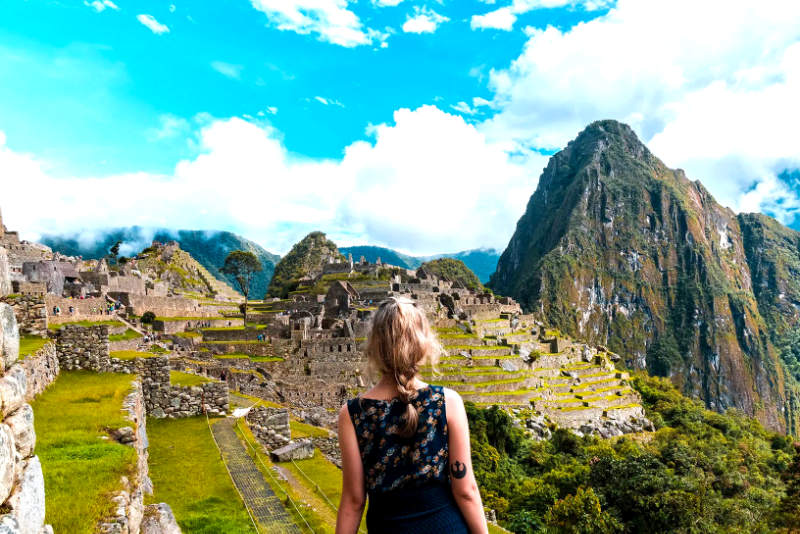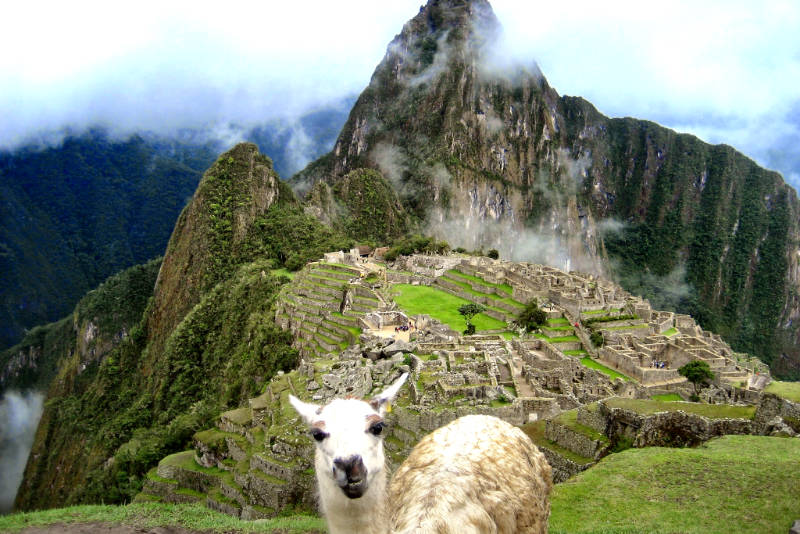What does Machu Picchu symbolize in Peru?
Machu Picchu is one of the most important symbols of Peru, in South America. The city of the Incas is located in the middle of the Andes Mountains, in a geographical space full of green mountains and a great history of more than five hundred years ago. Today, thanks to a great work of the Peruvian tourism authorities, the archaeological site represents a moment of meditation, energy and a lot of history. Most tourists who visit Machupicchu enjoy its landscapes, considered one of the most beautiful and impressive on the planet. Learn more!
- The symbolism of Machu Picchu
- Visit Machu Picchu and the symbols of Peruvian culture
- Machu Picchu represented in movies and animations
- Questions and answers
Which are the most symbolic constructions of Machu Picchu?
In Machu Picchu there are more than 150 stone buildings, all with a fine carving. Most visitors make the visit through circuit 2, which includes constructions such as the Temple of the Sun, the Main Temple, the Temple of the 3 Windows, the Sacred Rock, the Water Mirrors and more. Of all these constructions, some are the most symbolic in the Inca citadel. One of them is, without a doubt, the Intihuatana, the famous Sundial. This consists of a pyramid-shaped stone building whose top reflects a shadow on the rest of the stone. In addition, the Temple of the Sun has a great importance and representation in the visit. It is the only temple of Machu Picchu in a semicircular shape. Finally, the Huayna Picchu mountain is the most significant symbol because its figure is present in all the classic photos of the Inca city. Finally, the llamas, auquenidos that graze on the terraces, are very photographed and representative in the visit to the famous Historic Sanctuary of Peru.
The symbolism of Machu Picchu
- The trip to Machu Picchu will lead you to try to discover the millenary symbolism hidden in the art and architecture of each of the buildings of the Inca City of Machu Picchu. Discover more about the culture of this ancient civilization, its worldview, art, design, architecture, spirituality and society, through its symbolism.
- Although anyone can try to discover the symbolism of Machu Picchu, this type of experience is especially aimed at “groups of people” (friends, study groups or families) interested in art, architecture, design, anthropology, archaeology, mysteries and the amazing history of the Inca civilization.
- Finding out about the symbolism of Machu Picchu will allow you to understand and know more deeply the Andean culture and what is hidden behind the Inca city of Machu Picchu. This ancient stone city offers us a fascinating conceptual and creative universe behind its ancestral art and design.
- Explore the pre-Columbian sanctuary with semiotic eyes; try to unveil the mysteries of the shapes of its impressive buildings, its temples, its residences, its altars, its huacas, walls and fountains, as well as its urban layout; the reason for its location in the mountains and why its surroundings were considered sacred geography for the Inca civilization.
- The landscape in which the city of Machu Picchu is built is so impressive that it is hard to believe that it could have been chosen for the orange blossom. The fact that Machu Picchu was built right here, had a meaning that arises not only from the cosmovision and mythology, but also from an ancient Andean cult, in which the mountains were considered protective deities. Or perhaps it also has to do with energy, perceptible in this place.
- If you are interested in immersing yourself in the symbolism of Machu Picchu, you can take references from books such as “Introduction to the Semiotics of Pre-Columbian Andean Design”, “The Code of Wiraqocha, Andean millenary symbolism” or “Apus and huacas of the Andean Millenary Cult”.
Visit Machu Picchu and the symbols of Peruvian culture
These are some of the symbols of Machu Picchu:
- The Huayna Picchu – Machu Picchu symbolizes the mountain. And the most famous and representative mountain in the Inca city is the Huayna Picchu. This summit is represented in all the classic photographs of the citadel. On the slopes of this mountain the Incas built stone roads leading to its summit. There the Incas performed ceremonies of worship to their gods.
- The llama – The llama is the most famous and representative auquénido of Peru. In the Inca citadel there are about thirty llamas that graze freely in different parts of the archaeological site, mainly in the agricultural sector. These animals are domestic. In the main television series, movies and animations, next to Machu Picchu there is always a llama.
- The Intihuatana – The Intihuatana ‘sundial’ is one of the most important and representative constructions of Machu Picchu. It is located in the highest part of the religious sector, a few steps from the Main Plaza. It is believed that by bringing their hands close to it, visitors are filled with solar energy. Its real function was to predict the correct time for sowing and harvesting. Today, the visit to this construction is closed to the public.
- The Temple of the Sun – The Temple of the Sun is the most religious construction and one of the most representative of Machu Picchu. It is located in the religious sector, over a cavern where the Royal Tomb is located. It is the only Inca building in Machu Picchu with a semicircular shape because of its importance, as it was worshipped by the sun god. It can be visited through circuits 2 or 3.
Machu Picchu represented in movies and animations
These are some movies and TV series where Machu Picchu appears:
- Hasta que nos volvamos a encontrar – Peruvian film produced in 2022 by Netflix that tells a love story in the diverse landscapes of Cusco including the Humantay Lagoon, the thermal baths of Cocalmayo and Machu Picchu, the Inca citadel. It stars Spanish actor Maxi Iglesias and Peruvian actress Stephanie Cayo.
- The Emperor’s Follies – Walt Disney animated film (2000) that narrates the adventure of a young Inca emperor who becomes a llama, symbol of Peru. It stands out for the animations of Machu Picchu and the success of its main character ‘Kuzco’. It was a successful film that later had a continuity of episodes in series format.
- Diarios de motociclista – Film that narrates the epic 1952 trip that ‘Che’ Guevara made with Alberto Granado through the main locations of South America, such as Argentina, Chile, Colombia, Venezuela and Peru where the visit to the city of Cusco and Machu Picchu takes place.
- The Robot (Endhiran) – Indian fiction film (Bollywood industry) that was released in 2010 and includes several scenes in Machu Picchu. The film began shooting in 2008 and lasted about two years. It stands out for a dance scene, typical of Hindi films, in Machu Picchu.
- The Secret of the Incas – Hollywood movie released in 1954 starring Jerry Hooper and Charlton Heston that was one of the first to show Machu Picchu. It is known as one of the classics of cinema. It includes the participation of the famous Peruvian artist Ima Sumac.
- Transformers: Awakening of the Beasts – U.S. action-fiction film that continues the Transformers saga that was filmed in Machu Picchu and was released in 2023. It also includes several scenes in the city of Cusco and the beautiful landscapes of the Cusco jungle.

Transformers: Rise of the Beasts Movie Poster
Questions and answers
1) What does Machu Picchu symbolize for Peru?
Machu Picchu is one of the main symbols of Peru. Its image is represented in all the advertising videos of the country because it symbolizes meditation, energy and a lot of history. It is also one of the most visited tourist attractions in the world.
2) Which are the most symbolic constructions of Machu Picchu?
The most symbolic constructions of Machu Picchu are: the Temple of the Sun and the Intihuatana. In addition, the Huayna Picchu mountain and the llama, an Andean auquénido, are very representative.
3) Can I see llamas in Machu Picchu?
The llama is the most famous and representative auquénido of Peru. In Machu Picchu there are about thirty llamas that graze freely in different parts of the archaeological site, mainly in the agricultural sector. These animals are domestic. In the main television series, movies and animations, next to Machu Picchu there is always a llama.
4) What does the Intihuatana symbolize?
The Intihuatana ‘sundial’ is one of the most important and representative constructions of Machu Picchu. It represents the energy of the Inca city. It is believed that by bringing their hands close to it, visitors are filled with solar energy. Its real function was to predict the correct time for sowing and harvesting. Today, the visit to this construction is closed to the public.
5) What does the Temple of the Sun symbolize?
The Temple of the Sun is the most religious construction and one of the most representative of Machu Picchu. It represents the Inca mysticism because it is the most important religious construction. It can be visited through circuits 2 or 3.
6) What movies represent Machu Picchu?
Machu Picchu is represented in numerous movies and animated series, such as: Until We Meet Again (2022), The Emperor’s Follies (2000), The Motorcycle Diaries (1952), The Robot (2010), The Secret of the Incas (1954) and Transformers: Awakening of the Beasts (2023).
7) What does Huayna Picchu represent?
The Huayna Picchu mountain is the most famous and representative mountain in Machu Picchu. This summit is represented in all the classic photographs of the citadel. On the slopes of this mountain the Incas built stone paths leading to its summit. There the Incas performed ceremonies of worship to their gods.
8) What other constructions are symbols of Machu Picchu?
In addition to the Intihuatana and the Temple of the Sun in Machu Picchu are representative constructions, such as: the Temple of the Condor, the Main Temple, the Sacred Rock, the Royal Tomb and more.
Advice from people who have been there
 By: Jaime Ch.
By: Jaime Ch.“Excellent tour“
“We entered Machu Picchu with a guide because I wanted my children to learn more about this wonderful place. He helped us to go through each of the attractions of the Classic Route 1. We learned how they created the wonderful constructions and also the details of the construction of its temples. The guide also helped us with some pictures and also to have a good time during the 2 hours that our tour lasted.“
By Ticket Machu Picchu – Last updated, October 21, 2024


